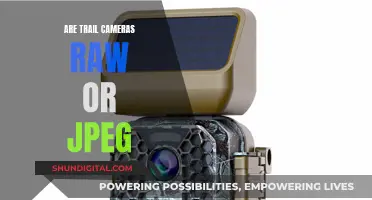
Face detection technology has been a game-changer for photographers, allowing them to capture well-exposed and in-focus images of people with ease. This technology, first introduced in 2006, has become increasingly prevalent in point-and-shoot cameras and even some DSLR models. When activated, the camera's autofocus (AF) and autoexposure (AE) systems scan the scene for faces and adjust the focus and exposure accordingly. The system typically identifies the main face and any subsidiary faces, prioritizing those closest to the center of the frame. While face detection improves the accuracy of focus and exposure, it does not always deliver perfect results, particularly when subjects are at different distances from the camera or when there are obstacles between the camera and the subject. In such cases, manual intervention may be necessary to achieve the desired outcome.
| Characteristics | Values |
|---|---|
| Face detection technology | Face Recognition, Face Detection, Face Priority Mode |
| Face detection procedure | 1. Identifying regions in the subject that contain skin colour, using a skin filter which detects colour and texture. 2. Scanning these areas for patterns that could represent eyes and eyebrows, nostrils, and mouth. |
| Face detection limitations | Inability to identify pets and other animals; can't identify non-human faces; unwanted detection of faces in works of art; distance-based failures; can't detect faces covered by sunglasses, swimming goggles, etc.; false detections. |
| Face detection frames | Gray: Face detected, but not available for autofocus. White: Autofocus available. Reddish-purple: Faces ranked second or lower in priority. |
| Focus mode | Single shot/Single-servo focus mode, Continuous focusing/Continuous-servo, Automatic autofocus mode |
What You'll Learn
- Face detection systems use pattern recognition to identify faces and adjust focus
- Manual focus lets you override autofocus issues or make precise adjustments
- Autofocus systems use a motor in the camera or lens to focus on a subject
- Phase detection autofocus is fast but prone to errors; contrast detection is slower but more accurate
- Single-servo autofocus locks focus on a subject; continuous-servo continuously adjusts focus on a moving subject

Face detection systems use pattern recognition to identify faces and adjust focus
Face detection systems use pattern recognition to identify faces and adjust the focus accordingly. This technology was first introduced in 2006 and has since become a common feature in point-and-shoot cameras. The system works by activating the camera's AF system, which links with a microprocessor that analyses the scene, looking for areas that resemble human faces.
The camera systems use two main procedures to identify faces:
- Identifying regions in the subject that contain skin colour by using a skin filter that detects colour and texture.
- Scanning these areas for patterns that could represent facial features such as eyes, eyebrows, nostrils, and mouth.
More sophisticated processing algorithms can detect a higher number of faces in a scene, with some systems being able to identify up to 10 faces and adjust the focus and exposure to provide the best average result. Some cameras also have tracking facilities, allowing them to follow one or more faces as they move within the frame and automatically adjust the focus and exposure.
Face detection systems have their limitations, such as the inability to identify non-human faces or focus on faces that are too close to or too far away from the camera. Additionally, they may struggle with faces that are partially obscured or in profile. Despite these limitations, face detection technology has improved the ease and accuracy of photography, particularly when capturing images of people.
Kami Wire-Free Camera: How Long Does the Battery Last?
You may want to see also

Manual focus lets you override autofocus issues or make precise adjustments
Manual focus is a useful feature to have on your camera, even though autofocus is used more often. It lets you take control of the focus when the autofocus is struggling, for example, in low-light conditions or when you want to fine-tune the focus.
Manual focus is also handy when you are shooting through foreground objects like grass or fences, and the autofocus is focusing on these objects rather than your intended subject. It is also useful when you are shooting a fast-moving object, such as a bird in flight, and the autofocus is struggling to keep up.
Manual focus is also beneficial when taking macro photos, photos of flat objects, or in low-light conditions. It can also be useful when you are shooting with the camera on a timer or remote trigger and want to ensure the focus doesn't go astray.
Overall, while autofocus is convenient and fast, manual focus gives you more control over your images and can help you achieve the perfect focus in challenging situations.
Understanding Camera's AHD Mode: What, Why, and How?
You may want to see also

Autofocus systems use a motor in the camera or lens to focus on a subject
Autofocus systems can be categorised as passive or active. Passive autofocus systems use contrast sensors within the camera to achieve focus, while active autofocus systems emit a signal to illuminate or estimate the distance to the subject. Passive autofocus can be further divided into contrast detection and phase detection methods, both of which rely on contrast for accurate autofocus.
Autofocus systems offer convenience, speed, and accuracy, especially when tracking moving subjects. They are widely used by sports and wildlife photographers. However, manual focus is still valuable when dealing with challenging lighting conditions or when precise adjustments are required.
The Evolution of Cameras: A Historical Timeline
You may want to see also

Phase detection autofocus is fast but prone to errors; contrast detection is slower but more accurate
Phase detection autofocus and contrast detection autofocus are the two systems used in modern digital cameras. They differ in terms of speed and accuracy.
Phase detection autofocus is incredibly fast and good at tracking moving subjects. This makes it ideal for wildlife or sports photography. However, it is more prone to errors and internal misalignment issues. It is also less effective in low-light settings or when trying to focus on low-contrast subjects.
Contrast detection autofocus, on the other hand, is the most accurate method of autofocus technology. It works by analysing pixels on the camera's sensor and finding the point of maximum contrast. This is how our brains work when we manually focus without the aid of technology. However, this process requires more data to be processed by the camera, making it slower than phase detection.
Some cameras use a hybrid of these two systems. For example, a digital single-lens reflex (SLR) camera may use contrast detection autofocus in Live View or movie mode and phase detection autofocus when you look through the viewfinder.
The Evolution of Cameras: From First Invention to Now
You may want to see also

Single-servo autofocus locks focus on a subject; continuous-servo continuously adjusts focus on a moving subject
Single-servo autofocus, also known as One-Shot (Canon) and AF-S (Nikon), is a camera setting that locks focus on a subject when the camera acquires focus. Once the focus is locked, it remains unchanged until the photographer releases the shutter button and tries again. This is ideal when the subject and the camera are stationary, and no readjustments are needed.
Continuous-servo autofocus, also known as AI Servo (Canon) and AF-C (Nikon), is a setting where the camera continuously adjusts focus as long as the photographer holds down the focusing button. This mode is ideal for capturing moving subjects and tracking their position. It is particularly useful for wildlife, sports, and action photography, where the subjects are in constant motion.
The choice between single-servo and continuous-servo autofocus depends on the type of photography. Single-servo is suitable for still subjects, such as portraits or landscapes, where neither the photographer nor the subject is moving. On the other hand, continuous-servo is more advantageous for action shots, wildlife photography, or any situation where the subject is constantly moving.
Both modes have their advantages and limitations. Single-servo is generally more stable and accurate when the subject is stationary or moving slightly, while continuous-servo is more reactive and accurate when the subject is in constant motion. Additionally, continuous-servo is useful for focusing at very shallow depths, such as when using fast apertures in close-up situations.
Colorado Camera Tickets: Do You Have to Pay?
You may want to see also
Frequently asked questions
Face detection is a form of pattern recognition. When you turn on the camera's face-detection system, the autofocus (AF) and autoexposure (AE) systems analyse the objects appearing within the borders of the frame and compare them with algorithms stored in the camera's memory. When face patterns are detected, the camera focuses on your face and exposes it properly.
Face detection systems can identify multiple faces in a scene, but the number of faces recognised varies depending on the camera. The system prioritises faces closest to the centre of the frame. Some cameras will let you tag specific faces and the camera can then automatically recognise certain faces and prioritise focus and exposure for them.
All face detection systems provide some kind of readout on the LCD screen, usually a frame around the prioritised face, to let you know what the camera is focusing on. This allows you to override its decision if you disagree.
Yes, some systems can be turned off when photographing subjects other than people, such as landscapes or pets. However, some manufacturers claim their systems can tell with a high degree of certainty when there are faces in the picture, so the feature does not need to be turned off.







